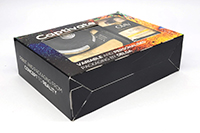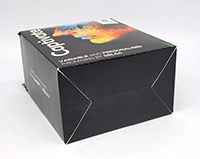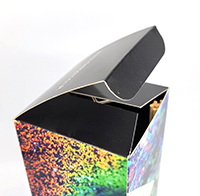The average consumer will spend 4 seconds looking at your product packaging, does your brand say what it needs to say in those 4 seconds? Let’s look at the fundamentals of effective packaging design, starting with form and function.
In this article, we will suggest things to consider when assessing the form and function of the packaging like where it will be used, how durable it needs to be, and how it will be opened. Then we will look at the types of base designs you can choose from to best support these requirements.
Effective packaging design.
The folding box cartons that Delga Press produces are seen everywhere, from FMCG to luxury items, cosmetics, pet products, food, and chemicals, but no two are the same. Every box will start with the contents, what needs to be contained, why that item needs to be contained, and whether the box is purely for marketing & information purposes or protection. This is a good place to start for briefing a design team. To help the design and packaging experts guide you on what stock to use, the style of packaging you need, and the types of finishes suitable for the project you will also need to consider things like:
- What is the product's supply chain journey?
- What is the budget for the packaging?
- Is there a brand status to maintain?
- Do you require the packaging to be as sustainable as possible?
- Will it be on display, are there any size limitations to this?
- How much will it be handled?
- Does the box need to contain a window?
- What is the manufacturing & packing process?
When packaging multiple items, consider the user unboxing experience, is it clear how to open it, how to remove each item, and can the packaging be reused, repurposed, or kept for storage?
Now we have covered some of the things to consider when designing the form and function of the box, let’s look at some ‘out of the box’ solutions. Bear in mind, that these are starting points, and the possibilities are endless with packaging design. Our packaging engineers can create bespoke styles to meet your requirements and often what you require will not be an ‘off the shelf’ solution.
It's all about the base.
Tuck end cartons
This type of box is versatile for many reasons. As they can be glued in production, they are supplied flat, ready to open up and pack, and don’t require any assembly, other than closing the ends. These types of boxes are ideal for things such as health and beauty, cosmetics, vaping products, and candles as they are generally lightweight, so the boxes don’t need to offer additional support. Tuck-end boxes can have same-face flaps or reverse-end flaps depending on the design and functionality required from the packaging. Integrated fitments can be designed to hold products in place, security can be enhanced with tamper-proof flaps and postal locks, and when combined with an envelope base or crash lock base this offers enhanced strength and easier access for fulfilment.
Envelope self-locking base
An envelope base is good for light items with a large base. They are more time-consuming to make up but can be stronger than a tuck end depending on the product it holds.
Crash lock base
 These are sturdy and quick to assemble but a little more complex to manufacture. Great for assembly lines where speed is of the essence or where a bit more strength is required to secure a heavier product.
These are sturdy and quick to assemble but a little more complex to manufacture. Great for assembly lines where speed is of the essence or where a bit more strength is required to secure a heavier product.
Request a quote.
Is your packaging performing the way you want it to? Would you like your packaging to perform better? Get in touch and our expert team will be in touch to discuss how we can help you.


